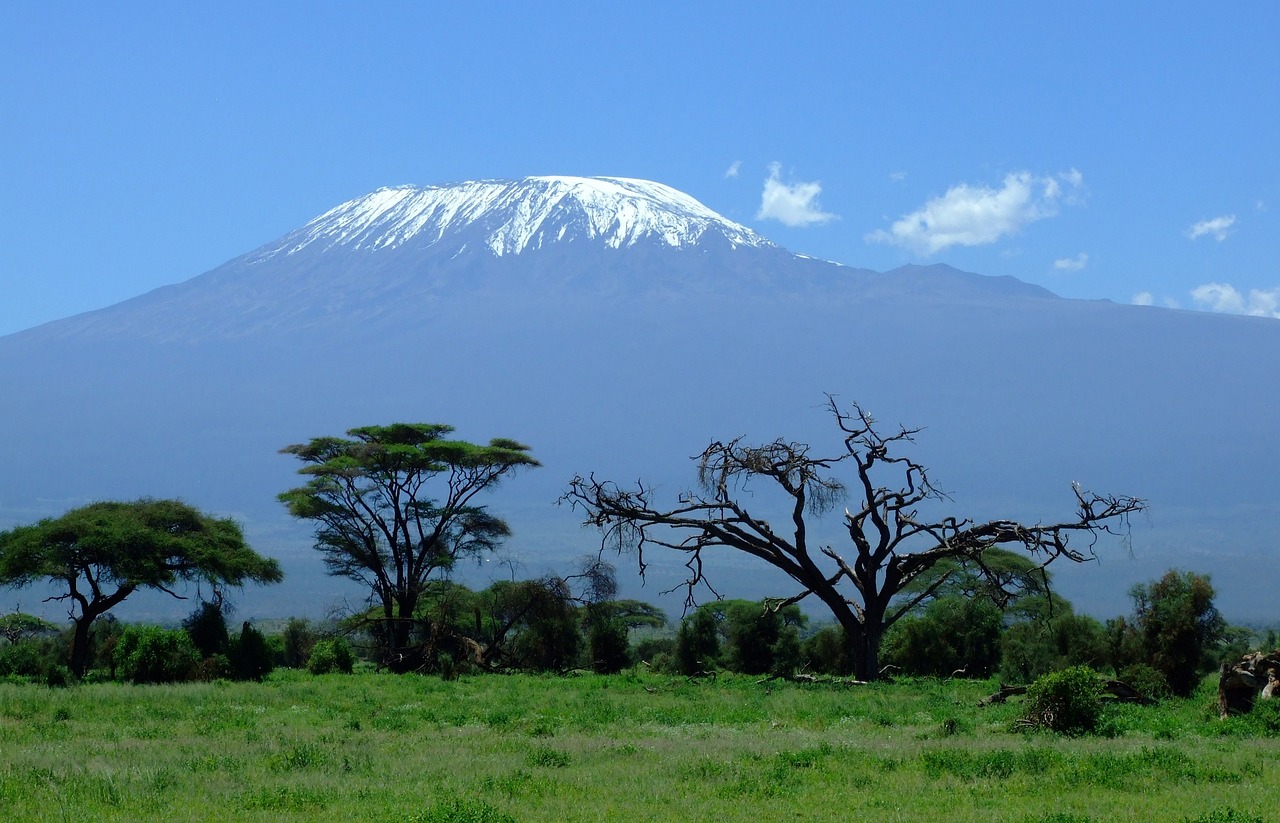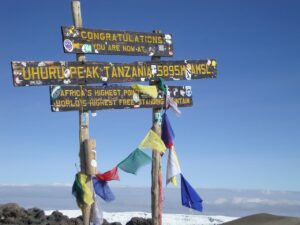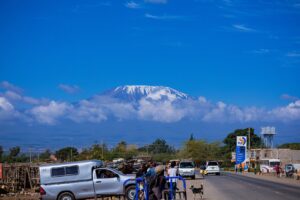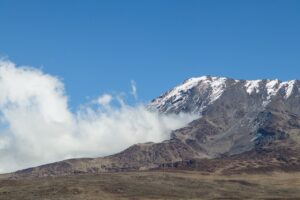
Everything You Need to Know about Climbing Mount Kilimanjaro
Posted on July 3, 2023
Climbing Mount Kilimanjaro
If you want the experience of a lifetime without dealing with problems along the way, we’ve got you covered! So, check out our guide on everything you need to know about climbing Mount Kilimanjaro.
Choosing the right climbing route
Choosing the right route is crucial when planning an affordable trip to Tanzania and aiming to conquer Mount Kilimanjaro. Several options are available, each offering unique experiences and varying difficulty levels. Some popular routes include the Marangu, Machame, Lemosho, and Rongai routes. The Marangu route, often referred to as the “Coca-Cola route,” is known for its relatively easier terrain and hut accommodations.
On the other hand, the Machame route is favored by those seeking a more challenging and scenic journey featuring diverse landscapes. The Lemosho route provides a longer and more gradual ascent, allowing for better acclimatization. Finally, the Rongai route offers a quieter and less crowded path. Consider your fitness level, preferences, and budget when selecting a route. So, opting for a route that suits your physical abilities and offers an immersive experience is advisable.
Physical preparation
Physical preparation is essential when it comes to climbing Mount Kilimanjaro. The trek involves long hours of walking, steep ascents, and high altitudes. In order to ensure a successful and enjoyable climb, it’s important to focus on improving your fitness level. So, start by incorporating cardiovascular exercises into your routine, such as jogging, cycling, or hiking. These activities will help strengthen your heart and lungs, preparing them for the challenges of altitude.
Additionally, engage in strength training exercises to build endurance and strengthen your leg muscles. Squats, lunges, and calf raises are excellent exercises to include. Don’t forget to gradually increase the intensity and duration of your workouts to simulate the demands of the climb! Finally, embarking on practice hikes and treks is also recommended to get accustomed to walking for extended periods with a backpack.
Acclimatization and altitude sickness
Acclimatization and altitude sickness are crucial factors to consider when climbing Mount Kilimanjaro. Altitude sickness, also known as acute mountain sickness (AMS), occurs when the body struggles to adjust to the reduced oxygen levels at higher elevations. So, to prevent AMS and ensure a safe climb, allowing your body time to acclimatize is essential.
This involves taking frequent rest days during the ascent to give your body a chance to adjust to the altitude. So, slow and gradual ascents are recommended to minimize the risk of AMS. It’s important to listen to your body. Regularly check for any symptoms of altitude sickness, the most common ones being headaches, nausea, dizziness, or fatigue. If symptoms worsen or persist, descending to a lower altitude is necessary to recover. Finally, hydration is also crucial in acclimatization, so drink plenty of water throughout the climb.

The height gets pretty serious, so do not ignore the importance of acclimatization while climbing mount Kilimanjaro.
The necessary gear and equipment
Proper gear and equipment are essential for a safe and comfortable journey. So, when packing for a trip to climbing Mount Kilimanjaro, be very careful when you decide what to bring. Firstly, invest in high-quality hiking boots that have good traction and ankle support. Furthermore, layering is crucial to adapt to the mountain’s changing temperatures and weather conditions. So, pack moisture-wicking base layers, insulating mid-layers, and a waterproof outer shell.
Don’t forget about warm hats, gloves, and socks to protect yourself from the cold, either. Note that a sturdy backpack with a capacity of at least 30 liters is necessary to carry your essentials. And those should include a headlamp, sunglasses, sunscreen, and a water bottle. Additionally, bring a warm sleeping bag and a comfortable sleeping pad for restful nights at high altitudes. Lastly, trekking poles provide stability and reduce strain on your joints during the descents.
Hiring a guide and porters
Hiring a guide and porters can greatly enhance your climbing experience on Mount Kilimanjaro. This is because a knowledgeable guide will navigate the trails, provide valuable insights about the mountain, and ensure your safety throughout the journey. They have extensive experience and expertise, making them invaluable companions. Porters, conversely, will carry most of your equipment, relieving you of heavy loads and allowing you to focus on the climb.
They are skilled in carrying loads and setting up camp, making your trek much more enjoyable. They are essential for beginners who’ve never been on an intense climb. Hiring local guides and porters also contributes to the local economy and supports the communities surrounding the mountain. However, choosing ethical and responsible operators who treat their staff fairly, provide them with proper equipment and training, and follow sustainable practices is crucial.

You can find climbing mount Kilimanjaro guides locally at one of the many stops along the way.
Permits and regulations
Obtaining the necessary permits and adhering to regulations is a crucial aspects of climbing Mount Kilimanjaro. Even just to embark on this adventure, you must obtain a climbing permit from the Kilimanjaro National Park. These permits are required for entry and help support the conservation efforts of the park. So, planning your climb in advance and securing your permit through a reputable tour operator or the park authorities is essential.
Additionally, it’s important to familiarize yourself with the regulations set by the park. These regulations aim to preserve the natural beauty and biodiversity of Kilimanjaro! They may include guidelines on waste management, camping restrictions, and respect for wildlife.
Accommodation options
Considering the accommodation options is essential when planning the perfect holiday and embarking on a climb up Mount Kilimanjaro. There are two main choices: camping or staying in lodges. Camping is a popular choice among adventure seekers, as it allows you to be close to nature and experience the wilderness of Kilimanjaro firsthand. Camping also offers a more affordable option, making it suitable for budget-conscious travelers.
On the other hand, lodges provide a higher level of comfort and convenience. These lodges are located at different points along the routes and offer amenities such as comfortable beds, hot showers, and delicious meals. So, staying in a lodge provides a cozy retreat after a long day of hiking. Whether you choose camping or lodges, both options have their advantages and can contribute to an unforgettable experience.
The best time to climb
Choosing the best time to climb Mount Kilimanjaro is crucial for a successful and enjoyable trek. You can climb the mountain year-round, but certain seasons offer more favorable conditions. You can consider the dry seasons the best times to climb from January to mid-March and from June to October. During these periods, the weather is typically drier, with clear skies and less chance of rain. The visibility is also better, allowing for breathtaking views of the surrounding landscape.
Furthermore, the dry seasons coincide with the peak climbing seasons, which means there will be more fellow climbers and a vibrant atmosphere on the mountain. However, it’s important to note that these periods can be more crowded, and prices may be higher. If you prefer a quieter and less crowded experience, consider the shoulder seasons of April, May, and November.
Wildlife and natural beauty
One of the captivating reasons to visit Tanzania is the remarkable wildlife and natural beauty found on Mount Kilimanjaro. The mountain is not only renowned for its majestic summit but also for its diverse flora and fauna! As you ascend, you’ll witness breathtaking landscapes ranging from lush rainforests to alpine meadows and barren lunar-like slopes. So, keep an eye out for unique species such as the Kilimanjaro tree hyrax, Colobus monkeys, and various bird species. The lower slopes also have elephants, buffaloes, leopards, and antelopes. The opportunity to witness such a rich array of wildlife in their natural habitat is truly awe-inspiring.
Moreover, the natural beauty of Kilimanjaro extends beyond its wildlife. The mountain offers captivating scenery at every turn, from the rugged peaks and glaciers to the vibrant sunrises and sunsets. Exploring this remarkable ecosystem provides a once-in-a-lifetime experience.

The scenery when climbing Mount Kilimanjaro.
The environmental considerations of climbing Mount Kilimanjaro
When climbing Mount Kilimanjaro, it’s crucial to prioritize environmental considerations and practice sustainable tourism. After all, the mountain’s fragile ecosystem is vulnerable to the impacts of increased visitation. As such, it’s essential to follow the principles of Leave No Trace, minimizing our footprint and ensuring that we leave the mountain in its natural state. This means properly disposing of waste, avoiding littering, and being mindful of the environment during the climb.
Supporting local initiatives promoting conservation and sustainable practices is also important. Additionally, being respectful of the flora and fauna on the mountain by not disturbing or removing any plants or animals is vital. By practicing environmental mindfulness and supporting sustainable efforts, we can ensure that future generations can also experience the beauty and wonder of Mount Kilimanjaro!
Climbing Mount Kilimanjaro the right way
With everything you need to know about climbing Mount Kilimanjaro covered, we know you’ll have a great time! Still, let us once again warn that if you’re not used to such climbs, you need to prepare extensively. Otherwise, it won’t be nearly as much fun for you.


Comments are currently closed.